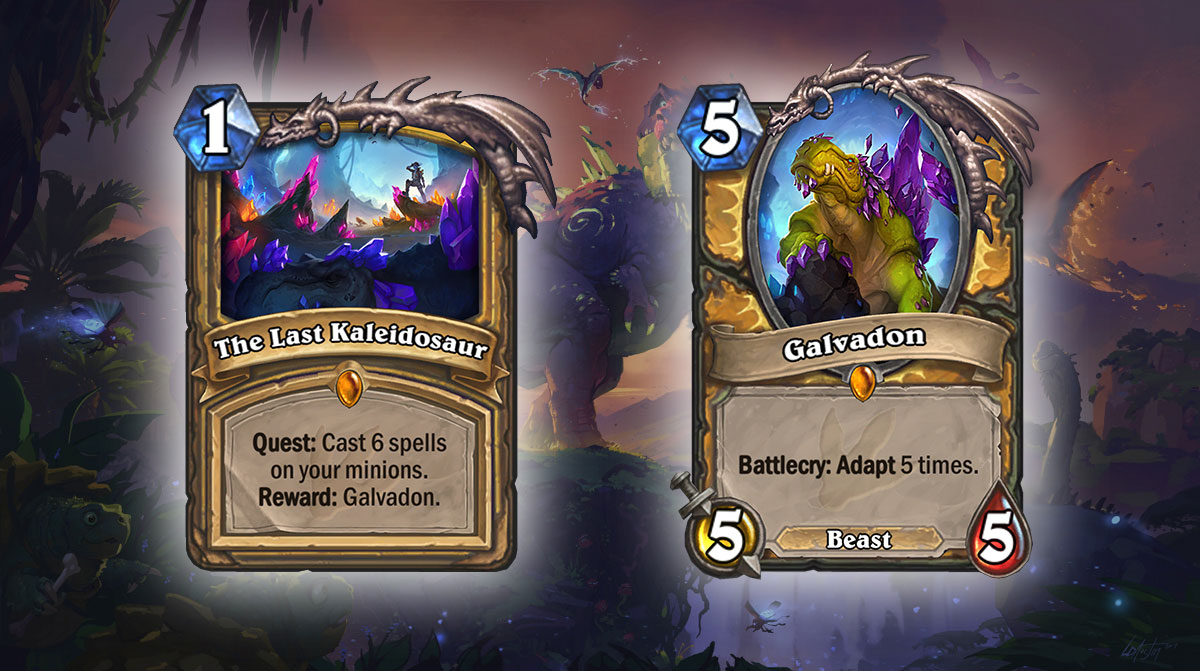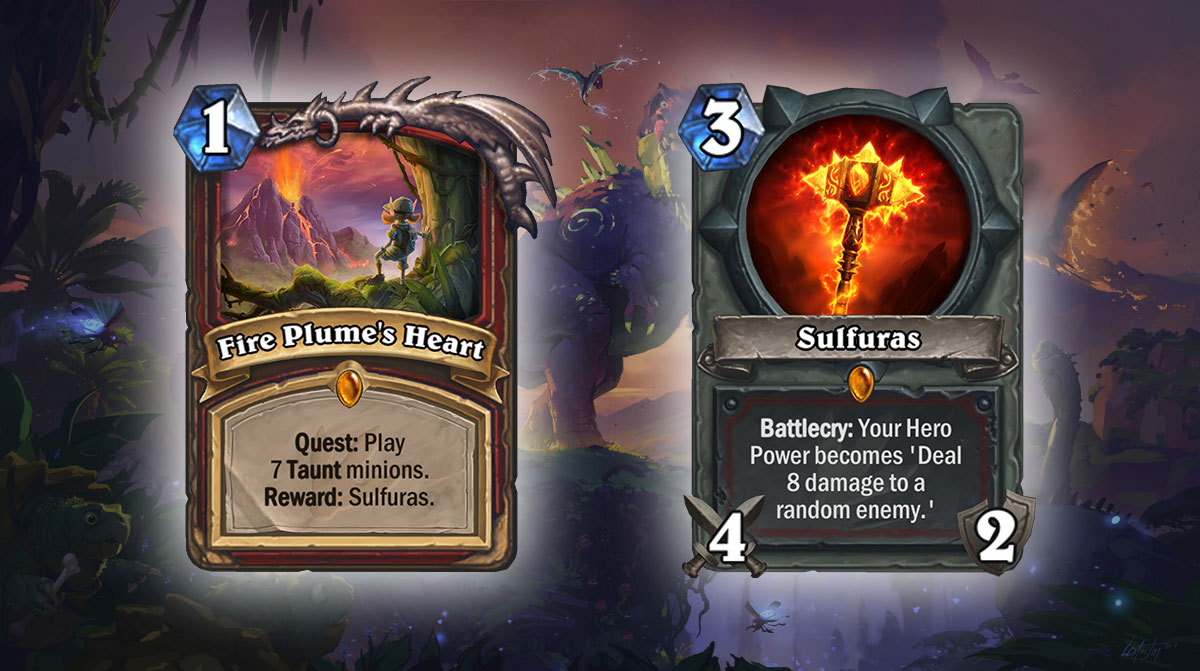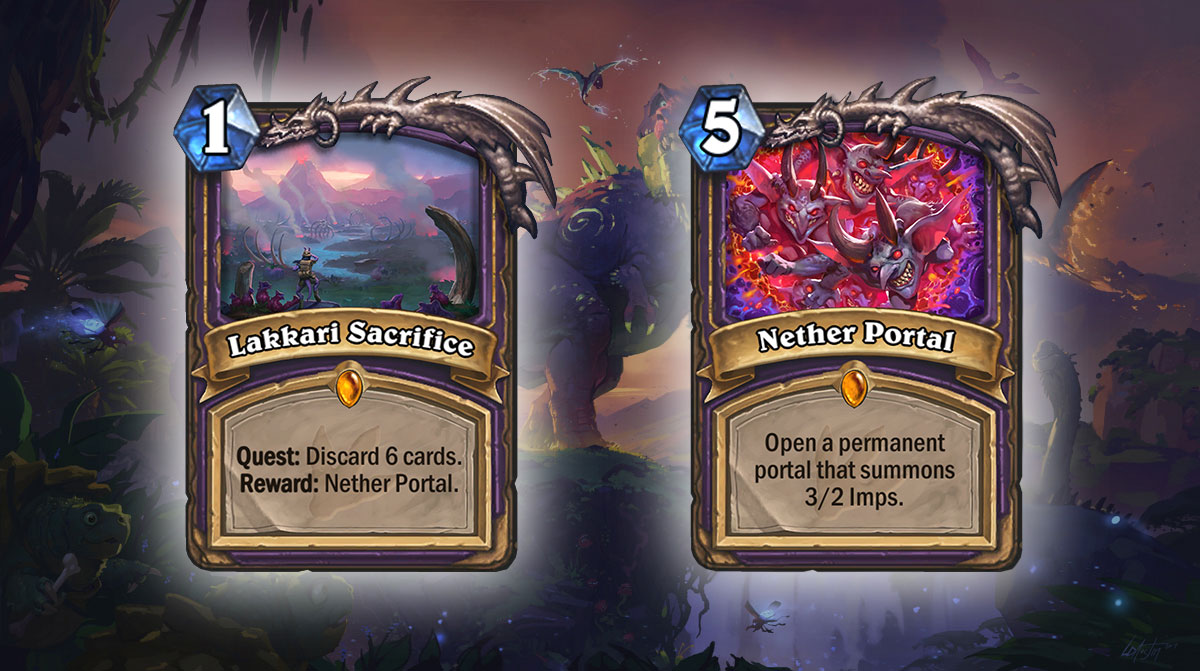Why have Hearthstone’s new Quest cards mostly missed the mark?
Sottle examines why the new mechanic seems to have failed, but also argues we shouldn't be worried.

Before you settle down for another dose of trademark Sottle negativity, allow me to get one thing clear: I love Journey to Un’Goro. I feel like it’s one of the most successful expansions in terms of breathing much-needed life into Hearthstone. And while I’ve enjoyed casting even the most obnoxious metagames, Un’Goro has dramatically rejuvenated my desire to grind for hours on ladder. The arrival of Midrange Paladins, Freeze Mages, Elemental decks, Aggro Druids, and countless other archetypes has shaken up a meta that was maligned as the most stale we’d ever seen.
Despite all that good news, there remains a sizeable dinosaur in the room, which is that of the nine available Quest cards—which are a cornerstone of the expansion in terms of new mechanics—six see almost no high level play at all. Of the other three, the Mage Quest has been quickly supplanted by the seemingly superior Freeze Mage, despite Blizzard’s best efforts to sweep that deck under the rug, and the remaining two “successful” Quests, Warrior and Rogue, are just not particularly interesting to play now that they’ve been figured out.
[The Quest mechanic] bears closer comparison to solitaire than Hearthstone.
When Awaken the Makers was revealed as the first Quest card, I raised concerns that the design was worryingly non-interactive, and unfortunately the other Quests just followed suit. It seems odd that a design team that has consistently used the lack of interactivity as a reason to nerf or rotate cards should then push a mechanic that bears closer comparison to solitaire than Hearthstone. Having recently cast multiple Quest Warrior mirror matches during the Hearthstone Global Games (and been audibly displeased about it), I can confirm that the games play out almost identically, with both Warriors rushing to complete the Quest and paying very little attention to anything their opponent is doing in the meantime.

Playing against a Quest deck lacks a sense of agency. Hearthstone is at its best when both players feel like they’re in control of their destiny, and the feeling of the player staring up at a ticking Quest counter that they can do little to alter creates the exact opposite effect. Imagine, for example, if the Warrior Quest involved reaching a certain amount of armor. This would create an engaging tug-of-war scenario in which each player would have to weigh up their actions, balancing the highest value or tempo play in conventional Hearthstone against the impact that the play has on the alternate win condition created by the Quest. To me, that sort of thing feels like a more interesting experience for everyone involved than just waiting to see who can curve out Taunt minions best.
Bouncing back
And so, to Quest Rogue. Man this deck is silly. The current lists seeing play still have a whiff of unrefinement to them, and are yet are still proving strong enough to allow several players to climb to the highest reaches of Legend—as well as becoming an immediate success in tournament play. The deck is hard to play optimally, no doubt about it. However, if you weigh the advantage you get from playing the deck optimally against the advantage you get from having Shadowsteps in your opening hand, or hitting a bounce effect from Mimic Pod, there’s a clear winner. There’s a serious issue of diminishing returns with the deck, as once you reach a very attainable level of proficiency, your winrate improvement tails off significantly in comparison to your “ability” to line up the right draws on a regular basis.
Powerful and difficult combo decks can be a great thing for the game if delivered properly, but Quest Rogue misses the mark by a large margin because the power level of the deck on even a slightly above average draw is too much to cope with for almost any deck in the current meta. Even the go-to counter of picking the most aggressive deck in your collection and slamming face really, really hard is now being met with answers as the Rogues start to bring cards like Bilefin Tidehunter, Doomsayer, and Shieldbearer into play.

The bigger question is whether we want Team 5 to babysit all the Quests into a position in which they see regular play.
Then there are the also-rans. The Quests that have already proven too weak to make any significant impact. These decks fall loosely into two categories: Quests where the target number required to complete them is too high and requires the deck to run too many bad cards in order to complete it reliably, or Quests where the reward is not powerful enough to consistently end the game when played.
The biggest gaming news, reviews and hardware deals
Keep up to date with the most important stories and the best deals, as picked by the PC Gamer team.
The good news is that because of the consistent “do X, Y times” format of the Quests, the first issue would be very easy for Team 5 to tweak, either by adjusting the numbers or introducing more cards to help fulfill the conditions of the Quests that are struggling. But it’s perhaps this very linear design that makes the Quests so inherently hit or miss. It’s a simple equation in that if the target number is too low, the Quest is incredibly strong and can be played with little to no drawback, whereas if it’s too high, the Quest immediately falls into the realm of unplayability.
The bigger question, though, is whether we even want Team 5 to babysit all the Quests into a position in which they see regular play. Personally, I’m very happy with the meta as we have it now. Yes, Quest Rogue frustrates me and Quest Warrior bores me to tears, but there are always going to be some matchups I don’t enjoy. I would be more than happy if they left us to savor all the sweet decks that have come out of Un’Goro, allowing Quests to be relegated to an amusing distraction. Unlike the big whiffs in the past such as Joust and Inspire, this expansion seems to be strong enough overall to support the dead weight of a failed mechanic—and, for now at least, the meta is flourishing just fine with Quests in the background.

